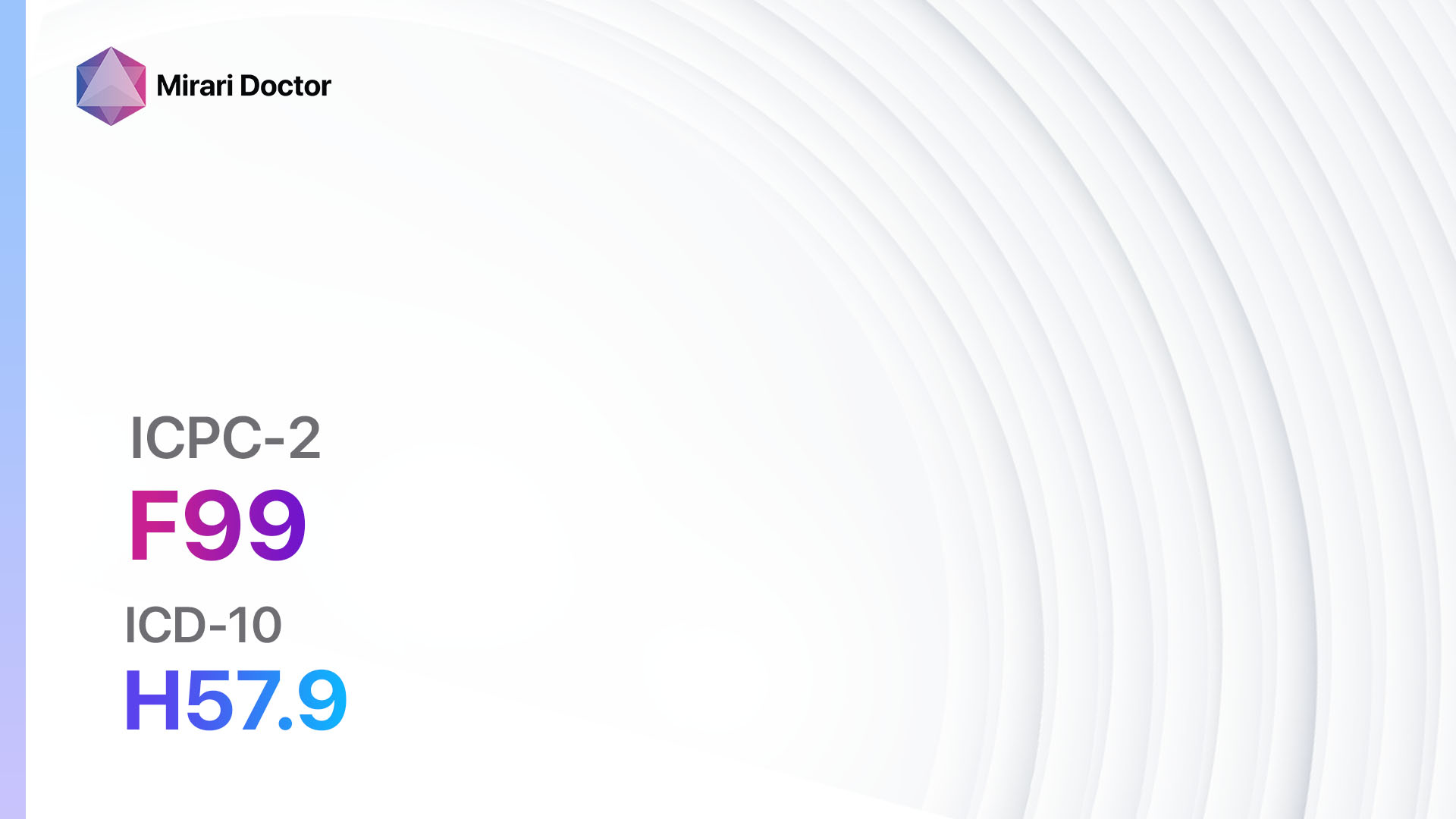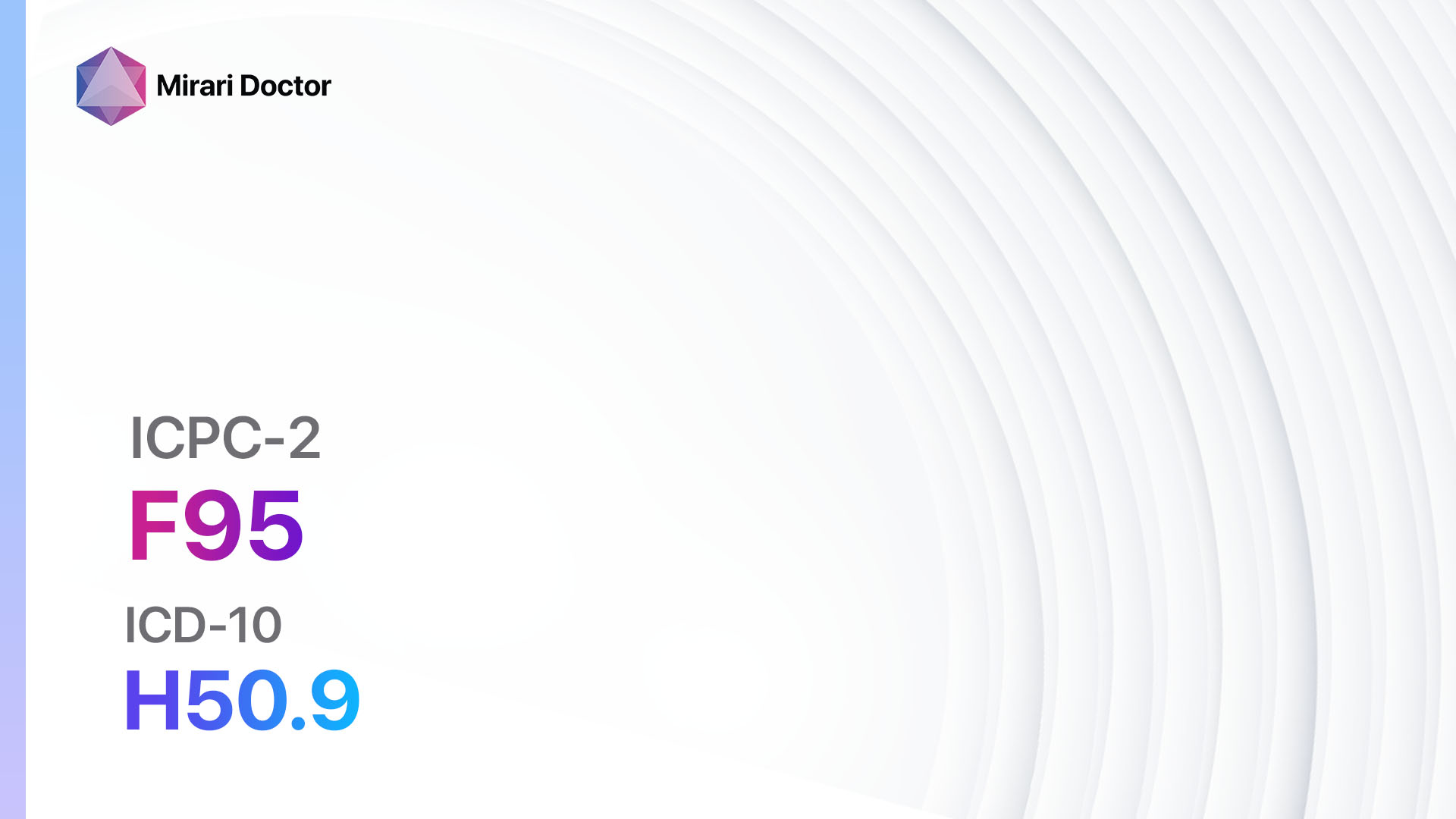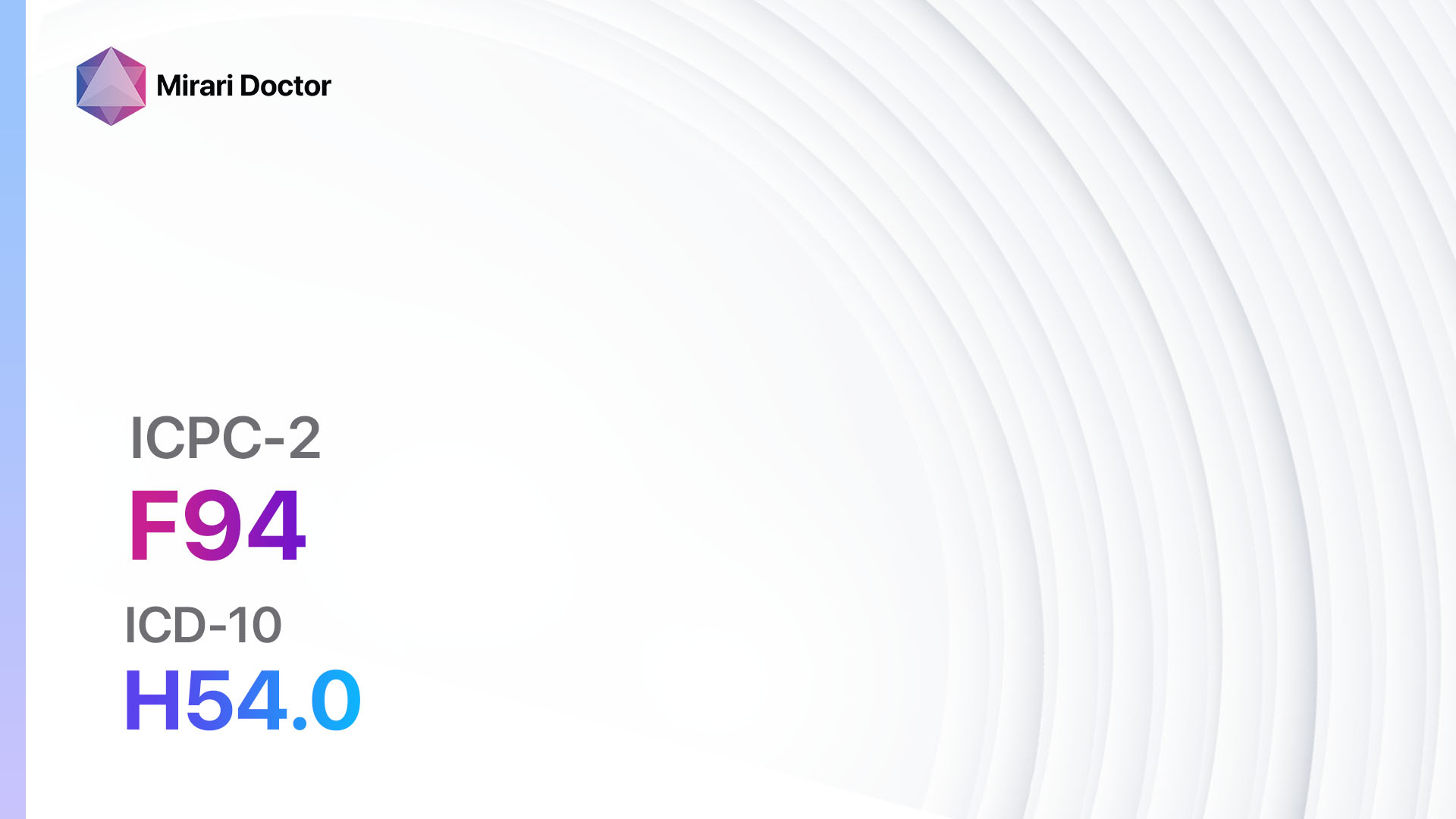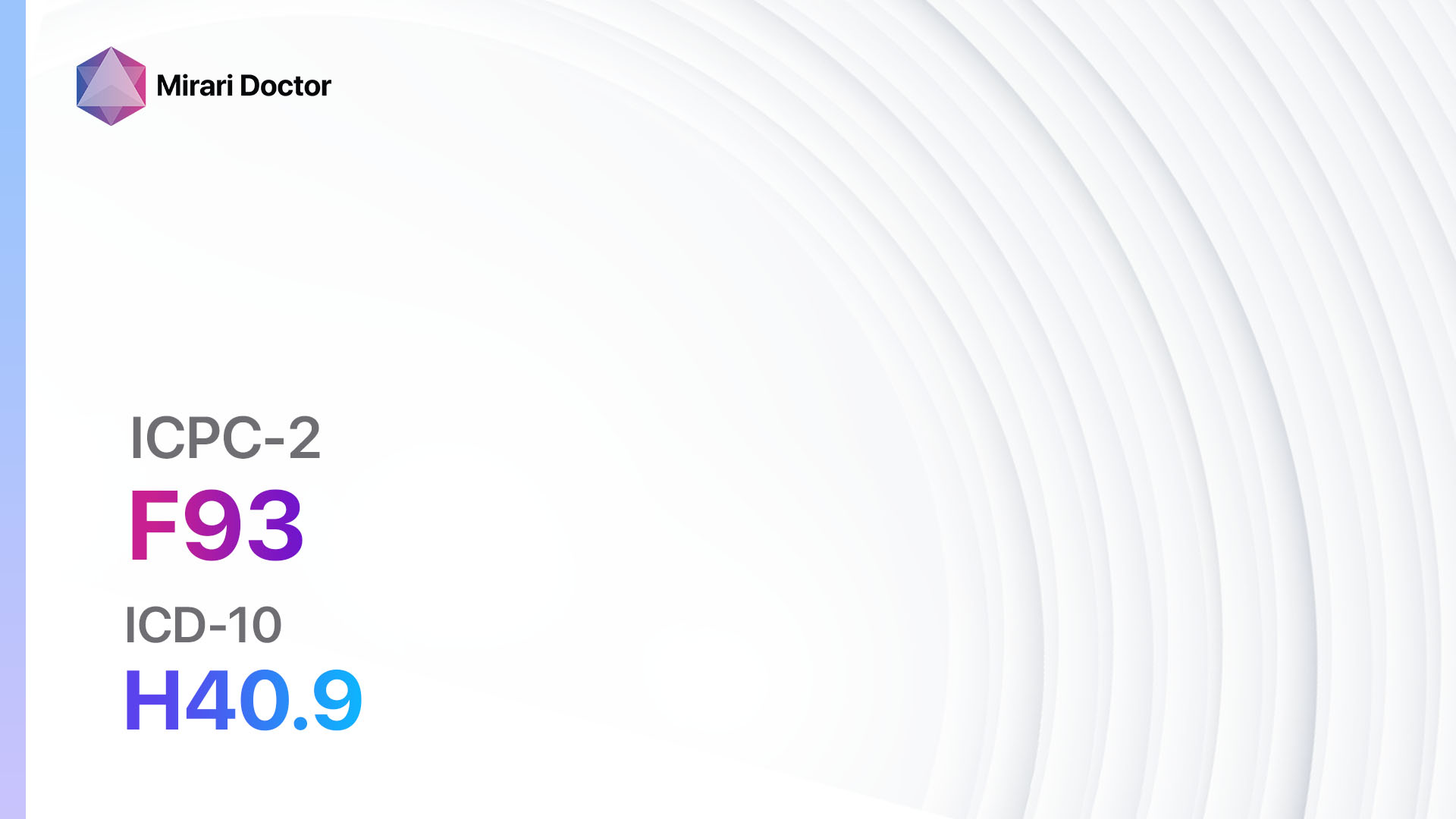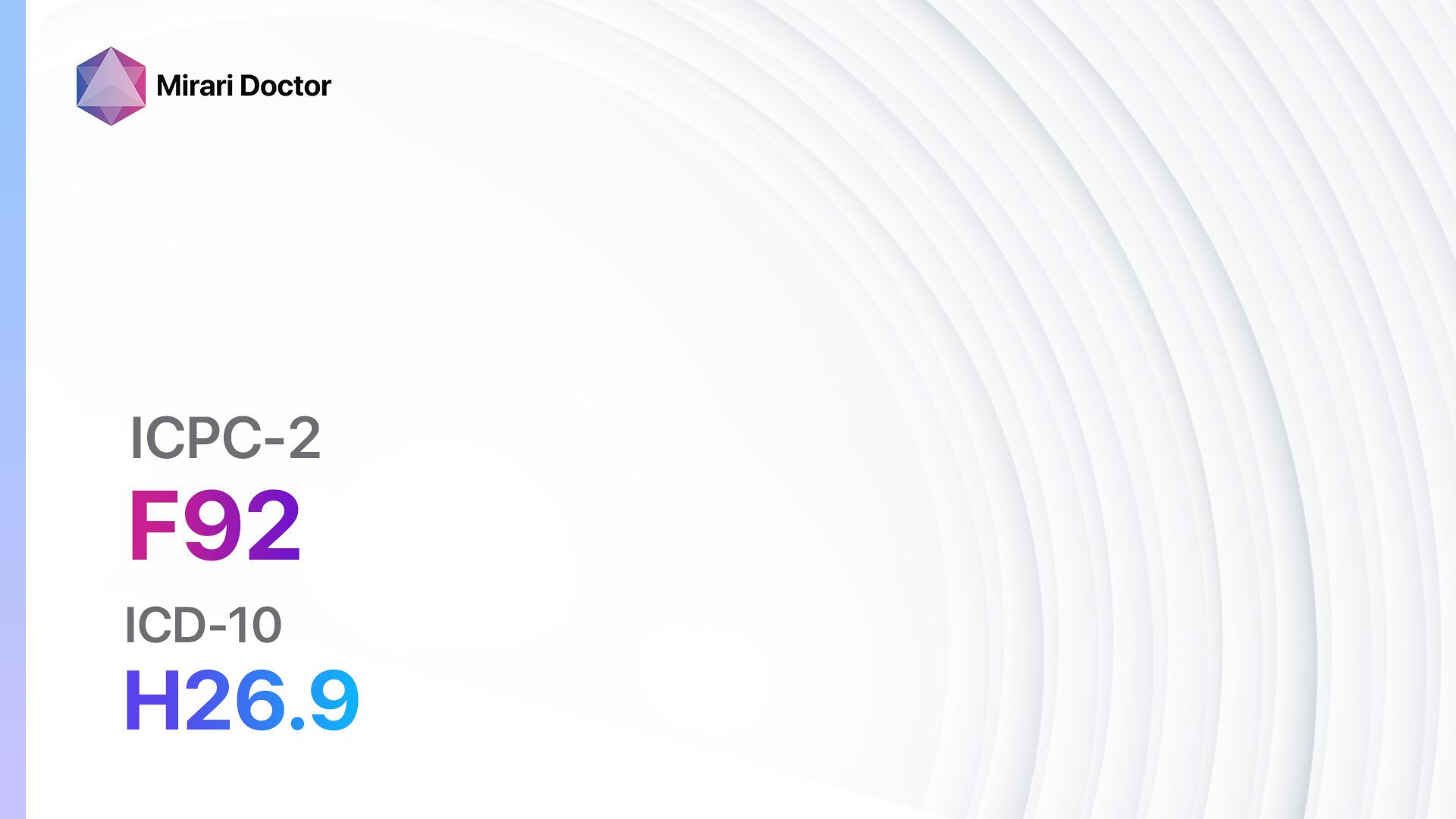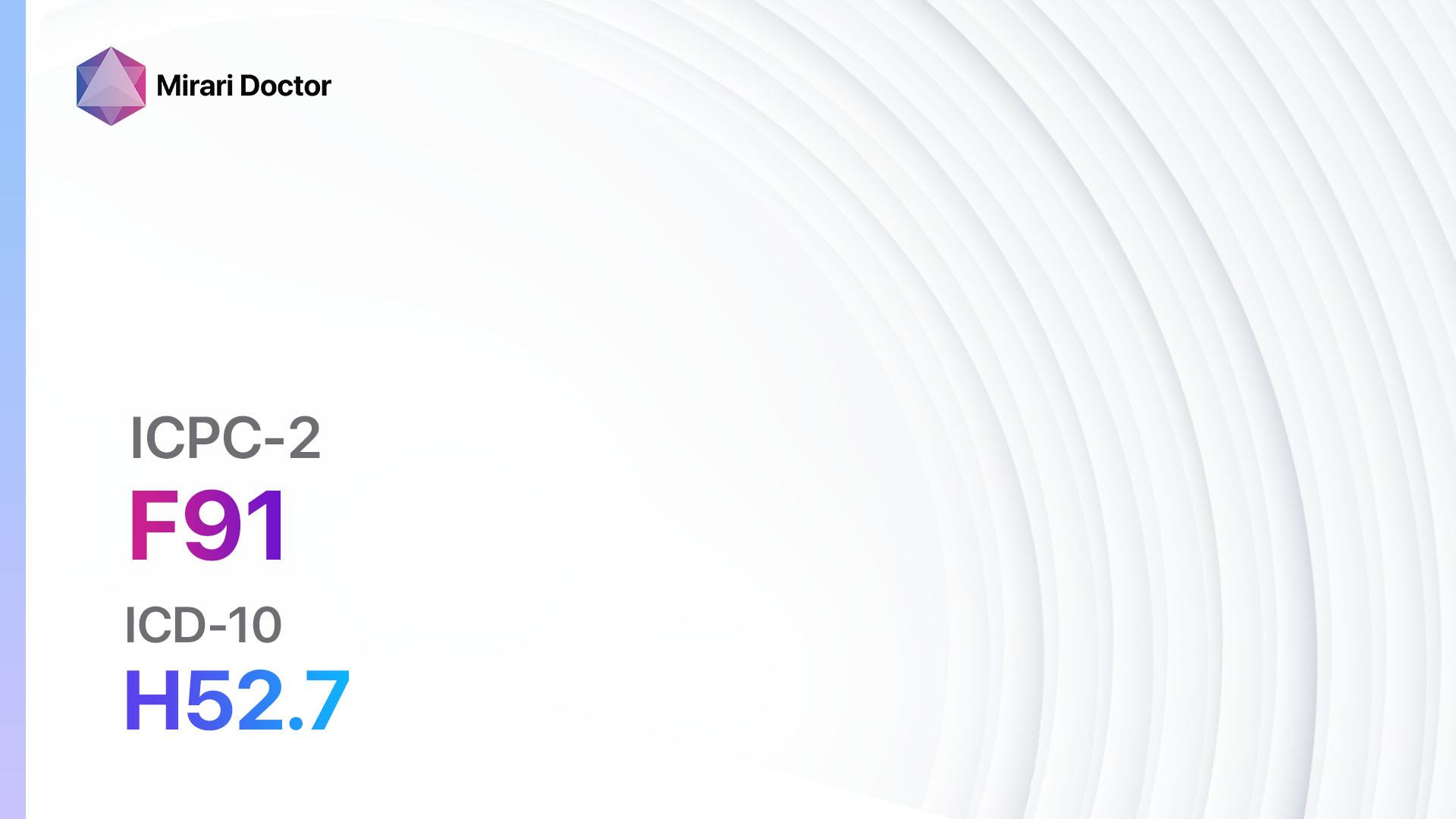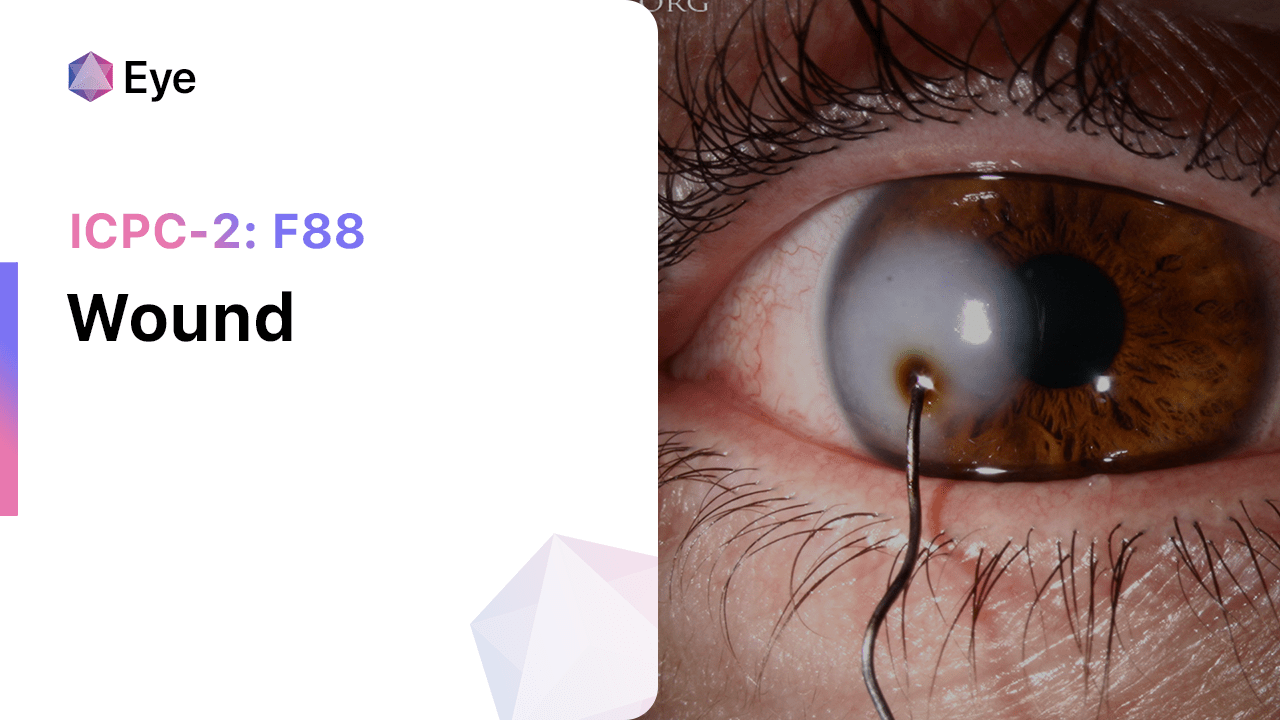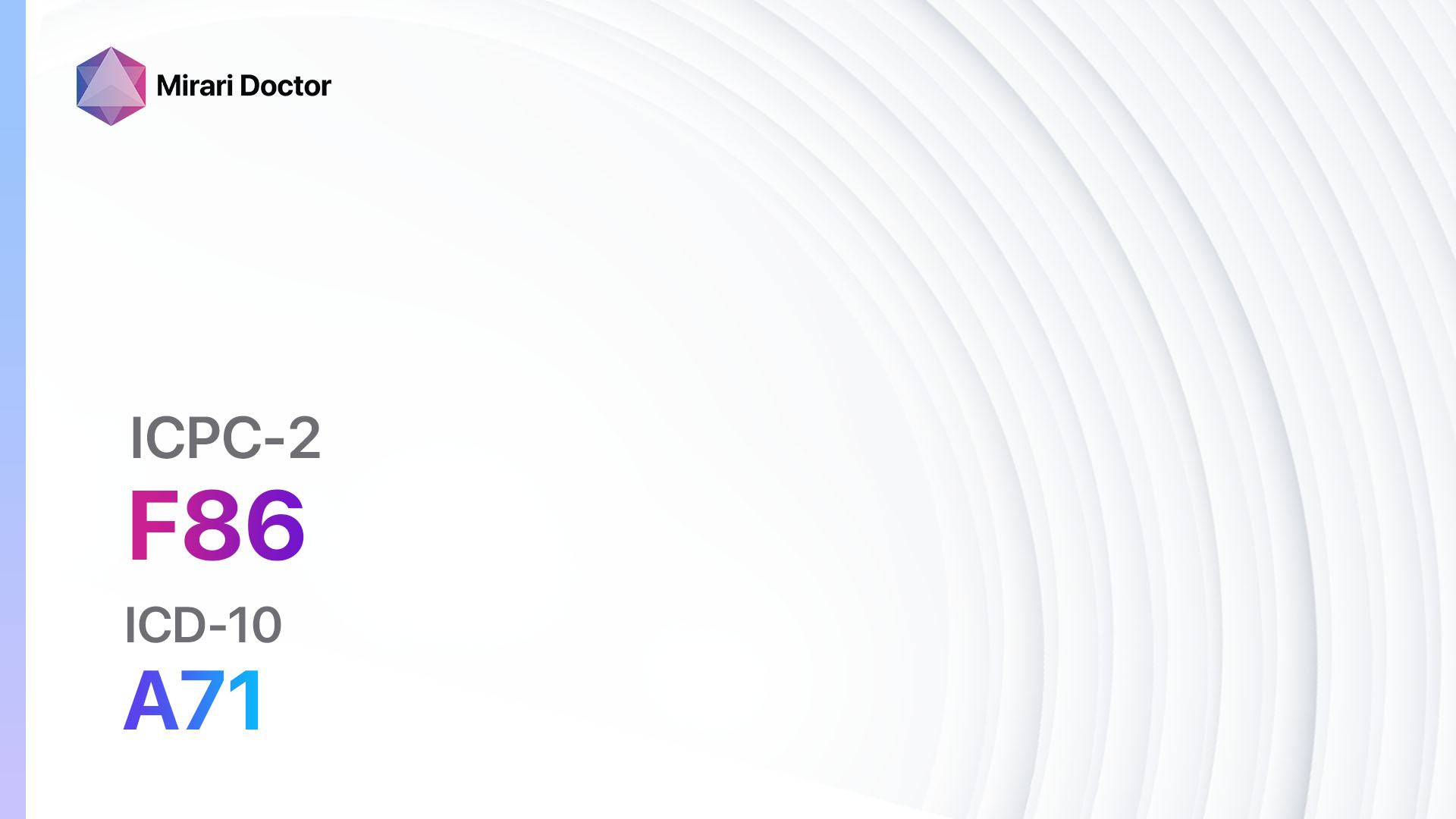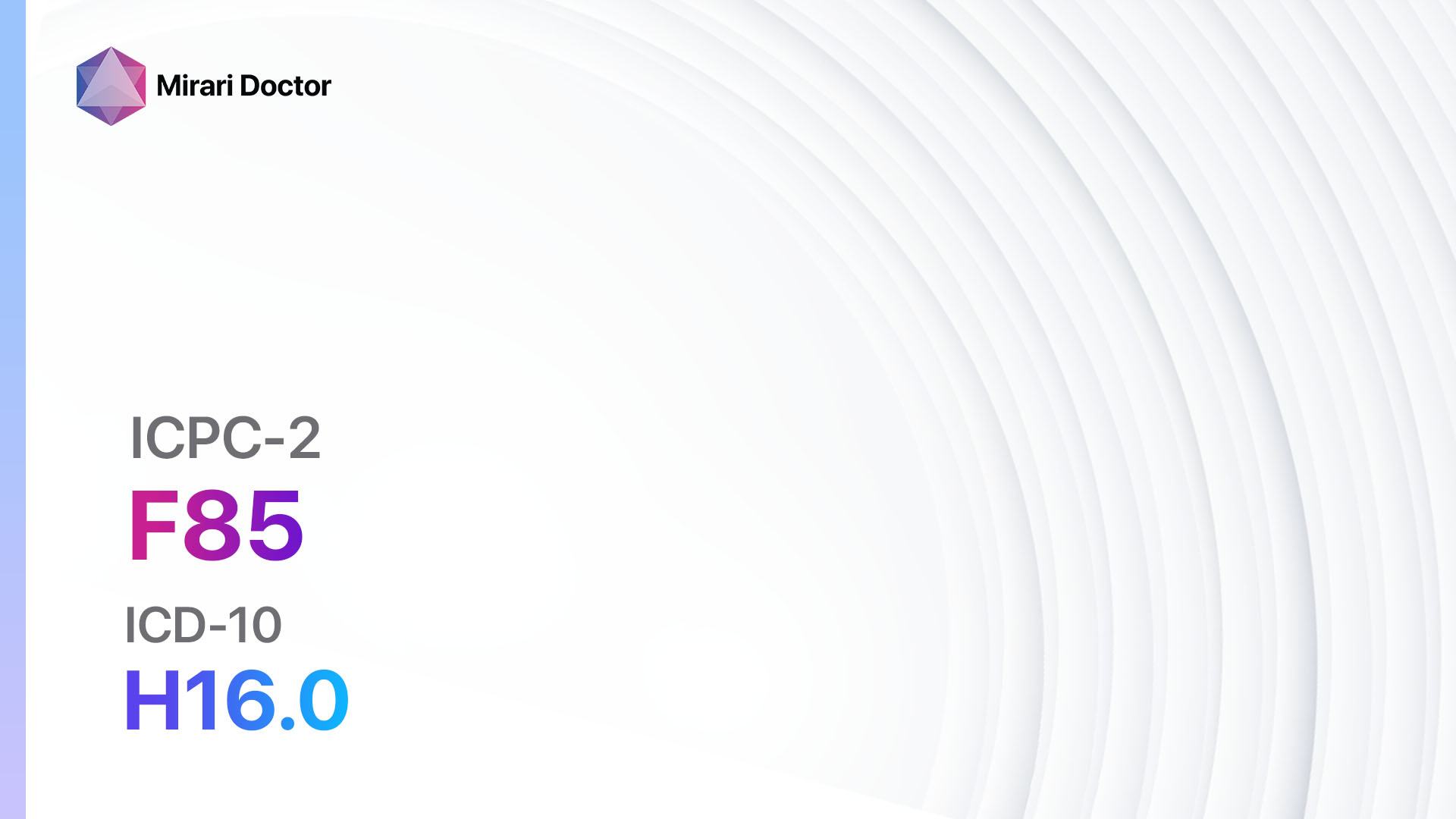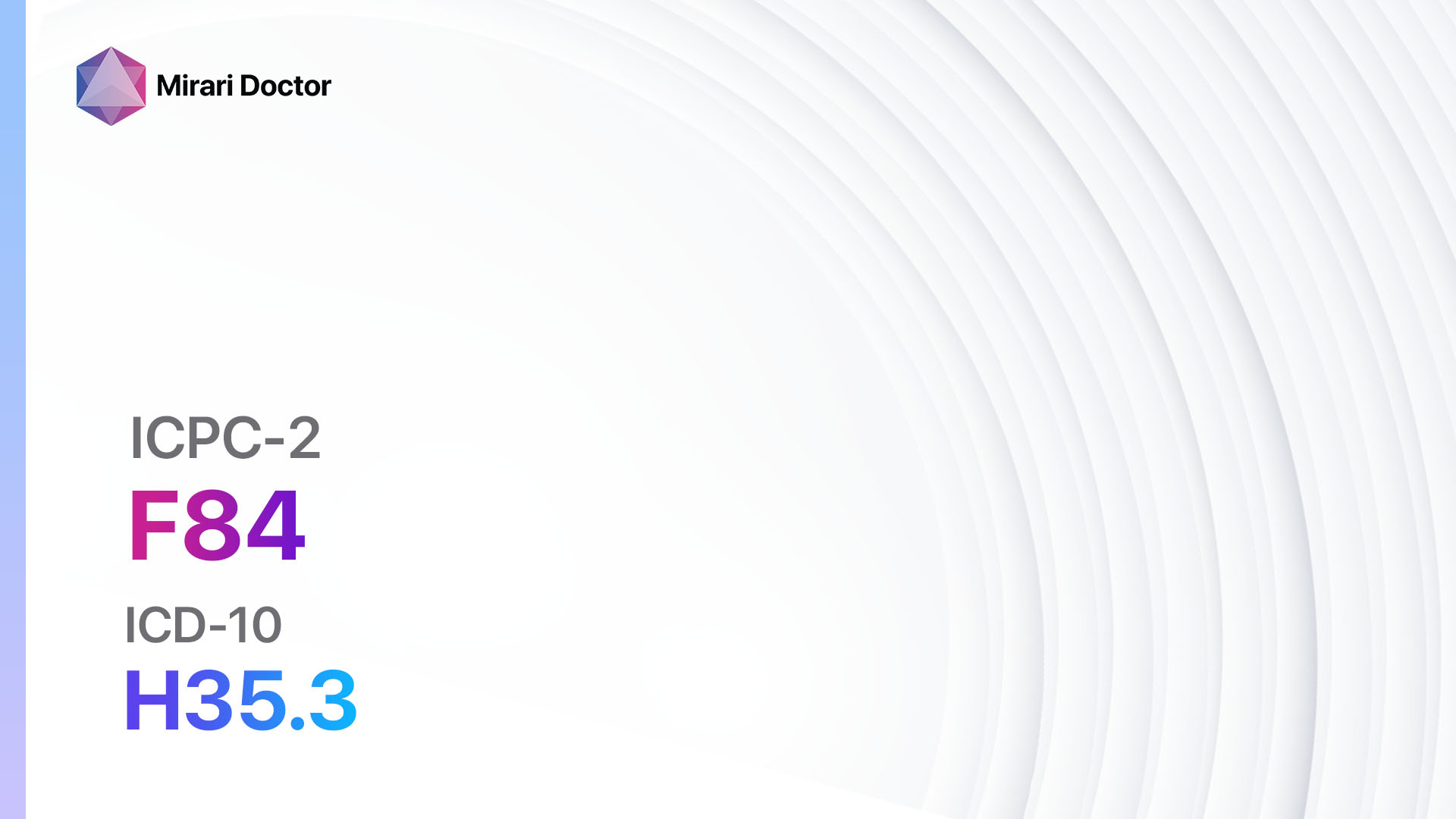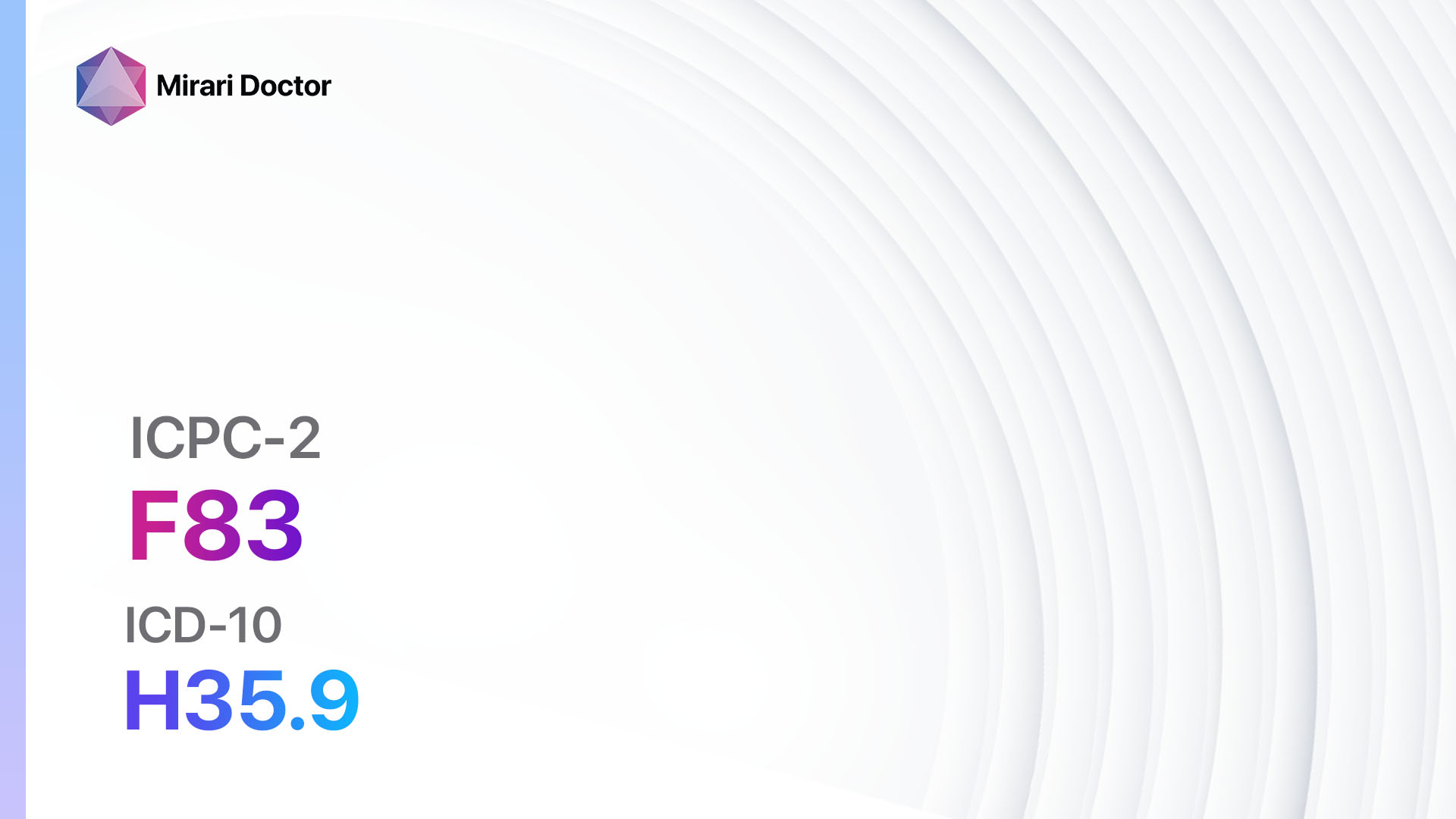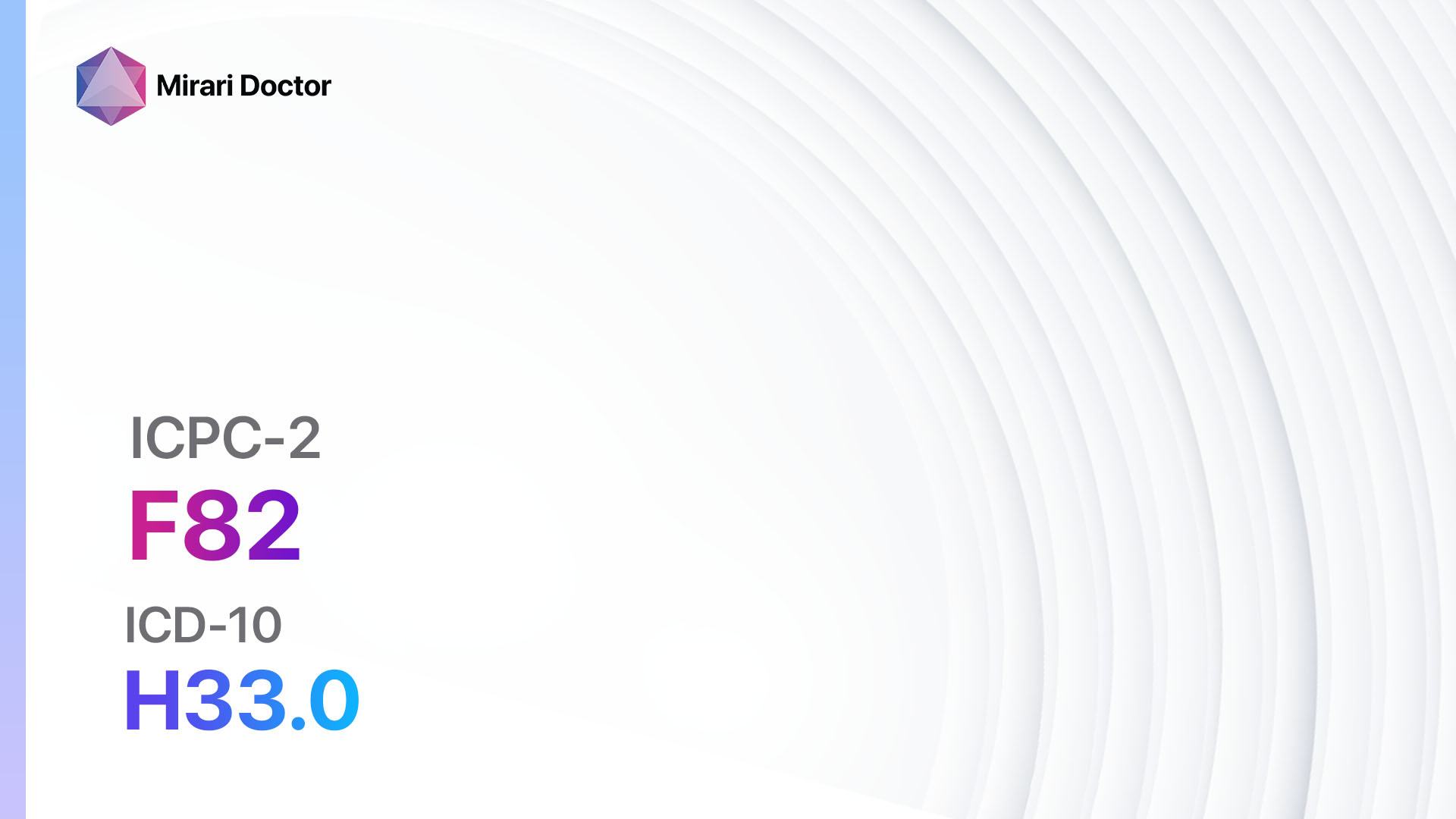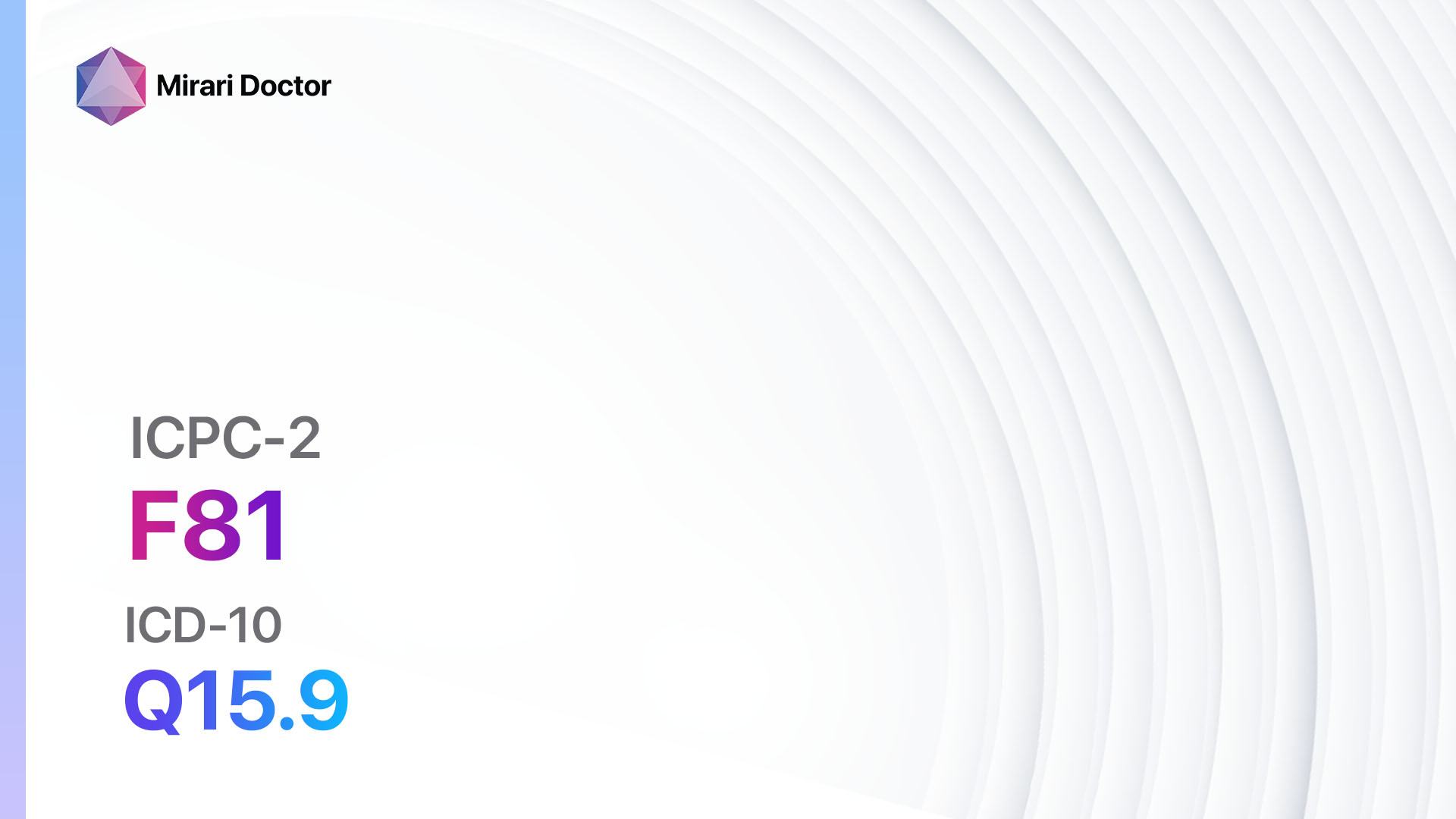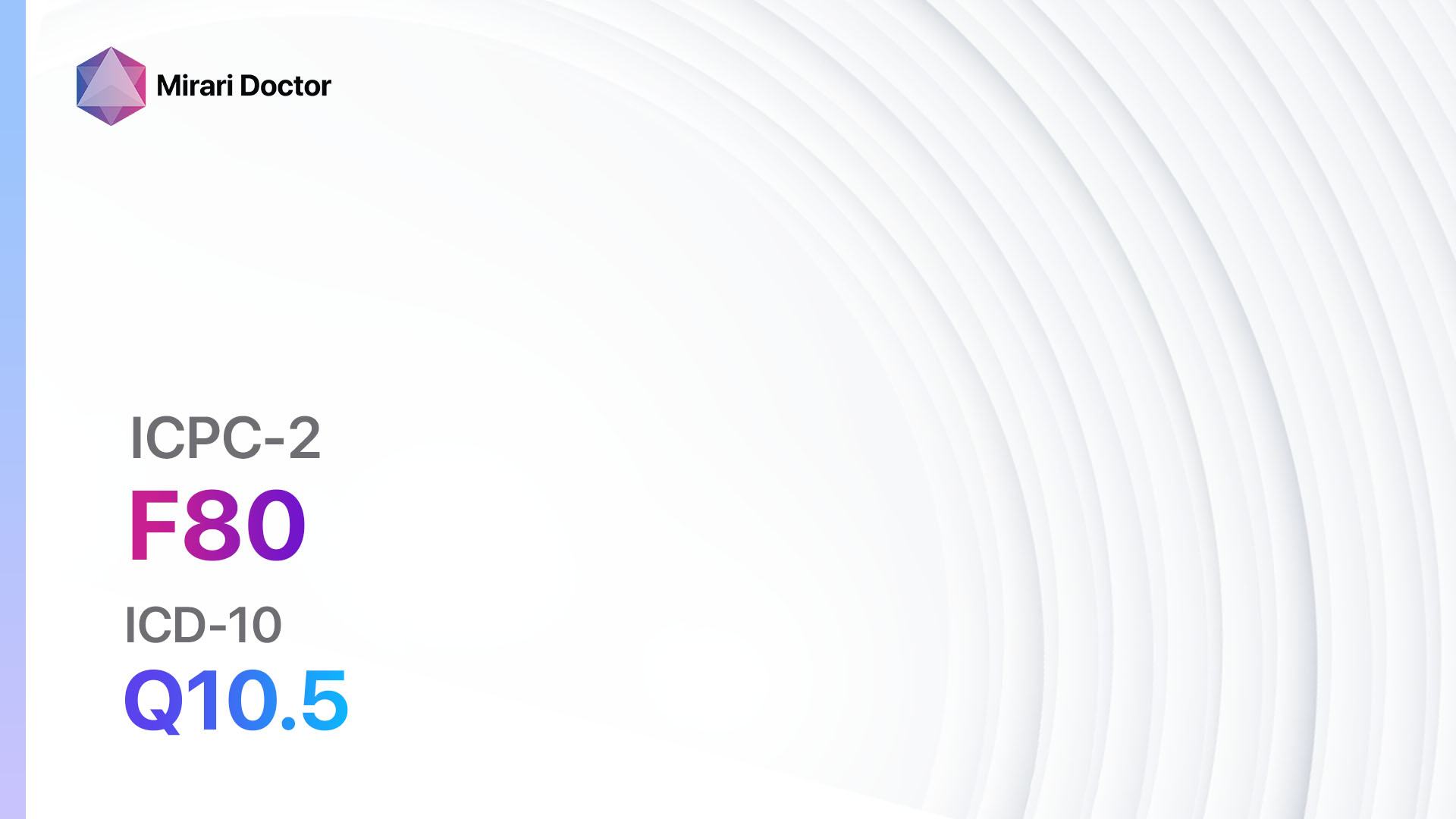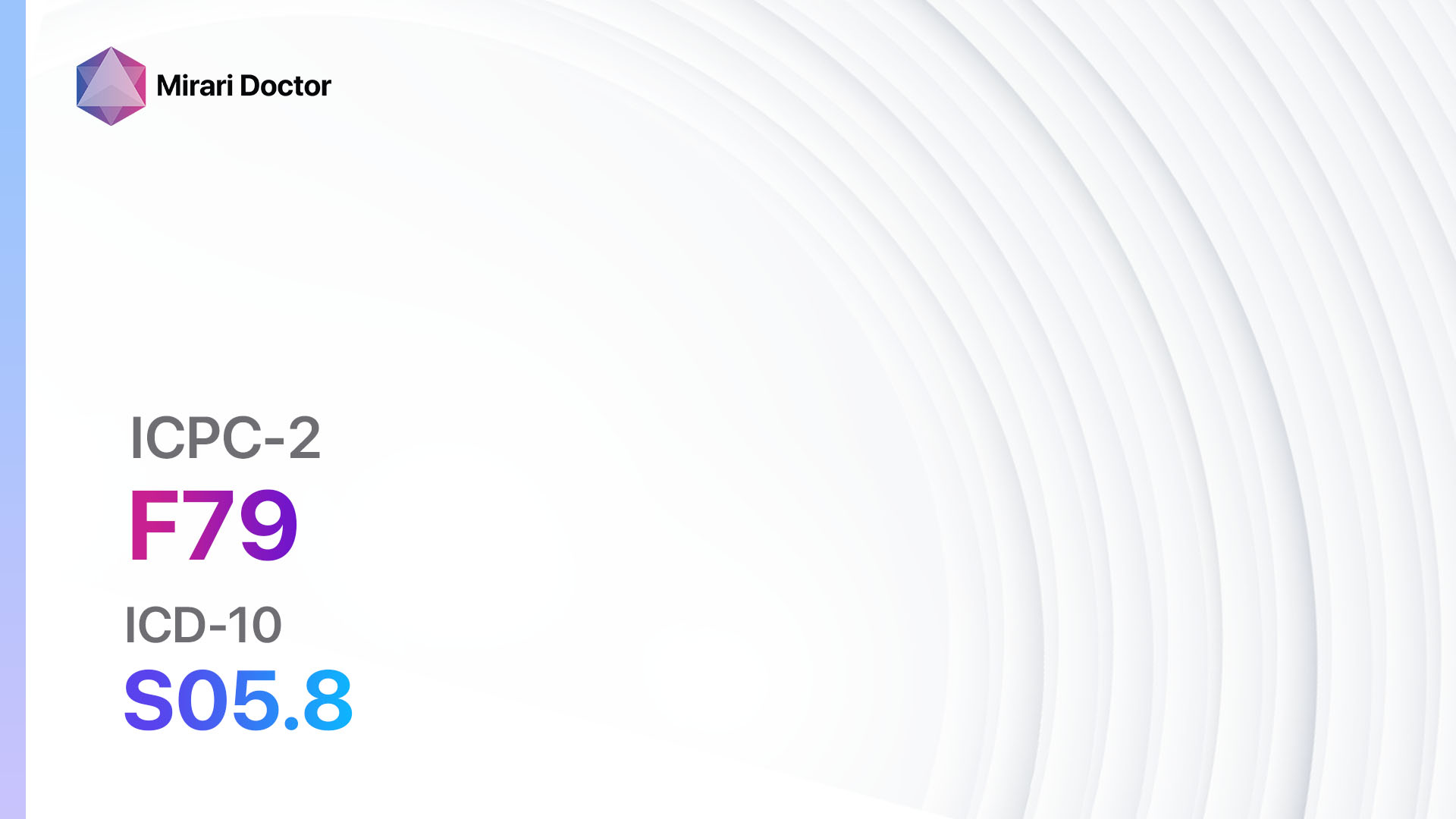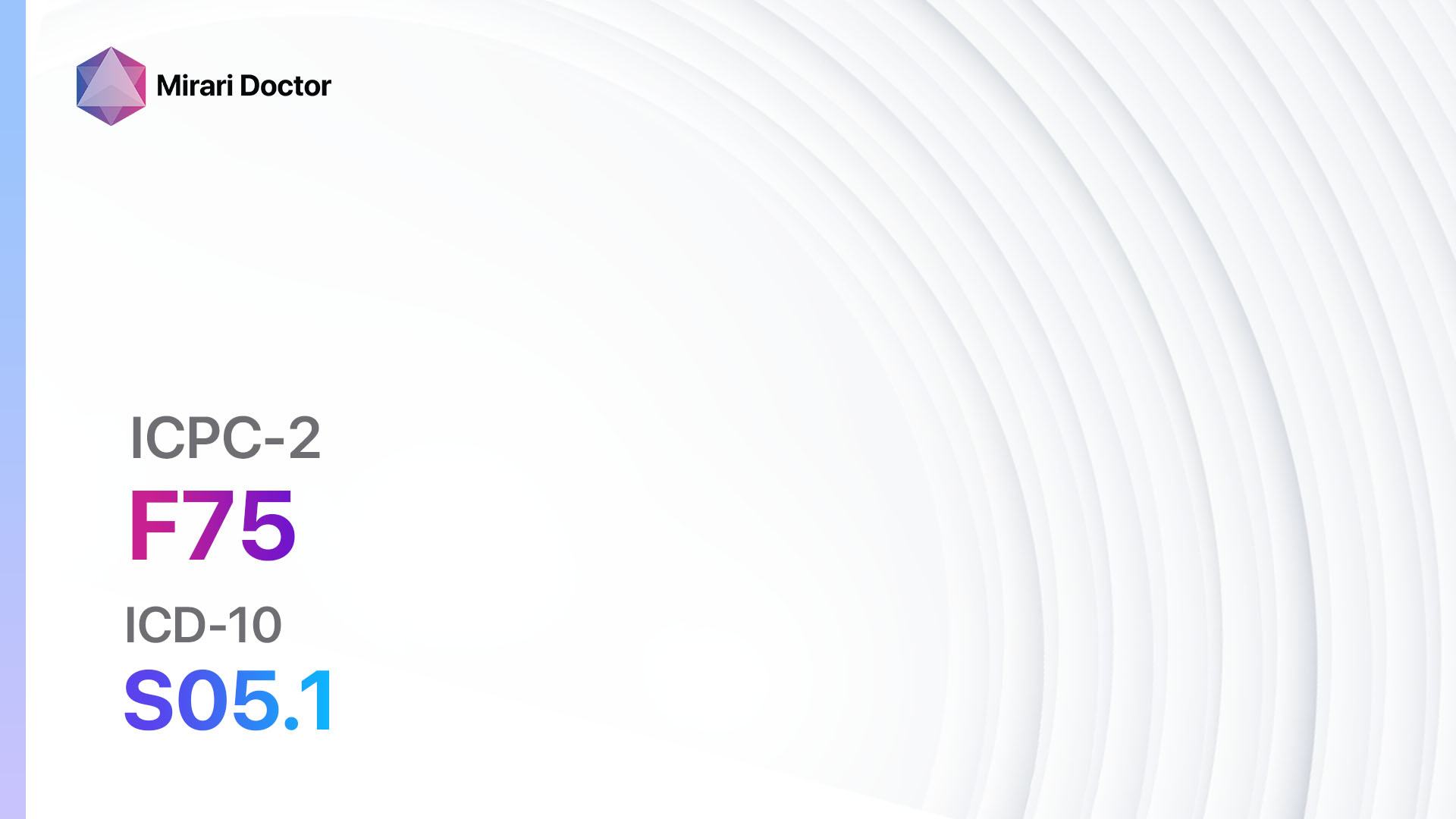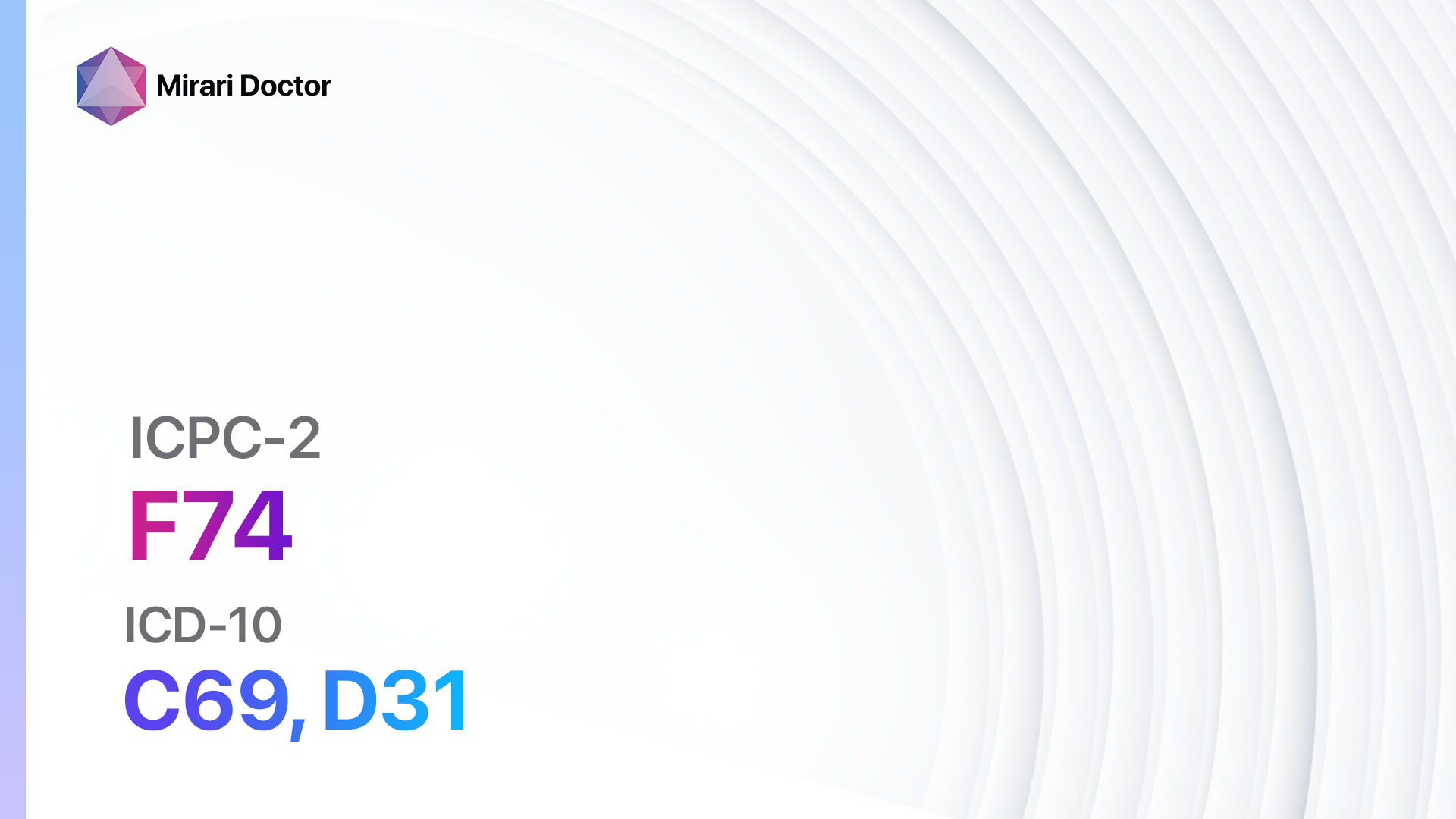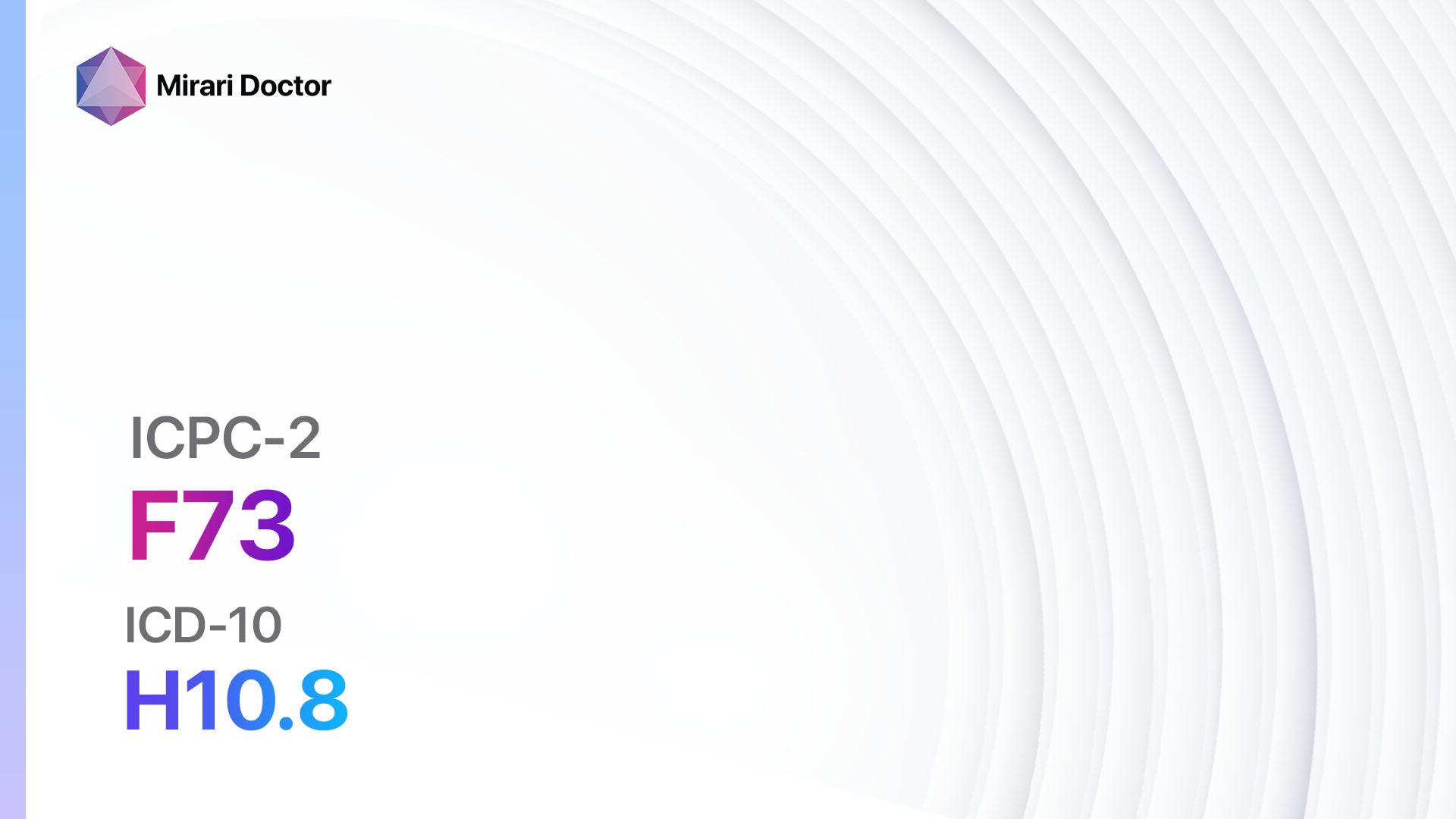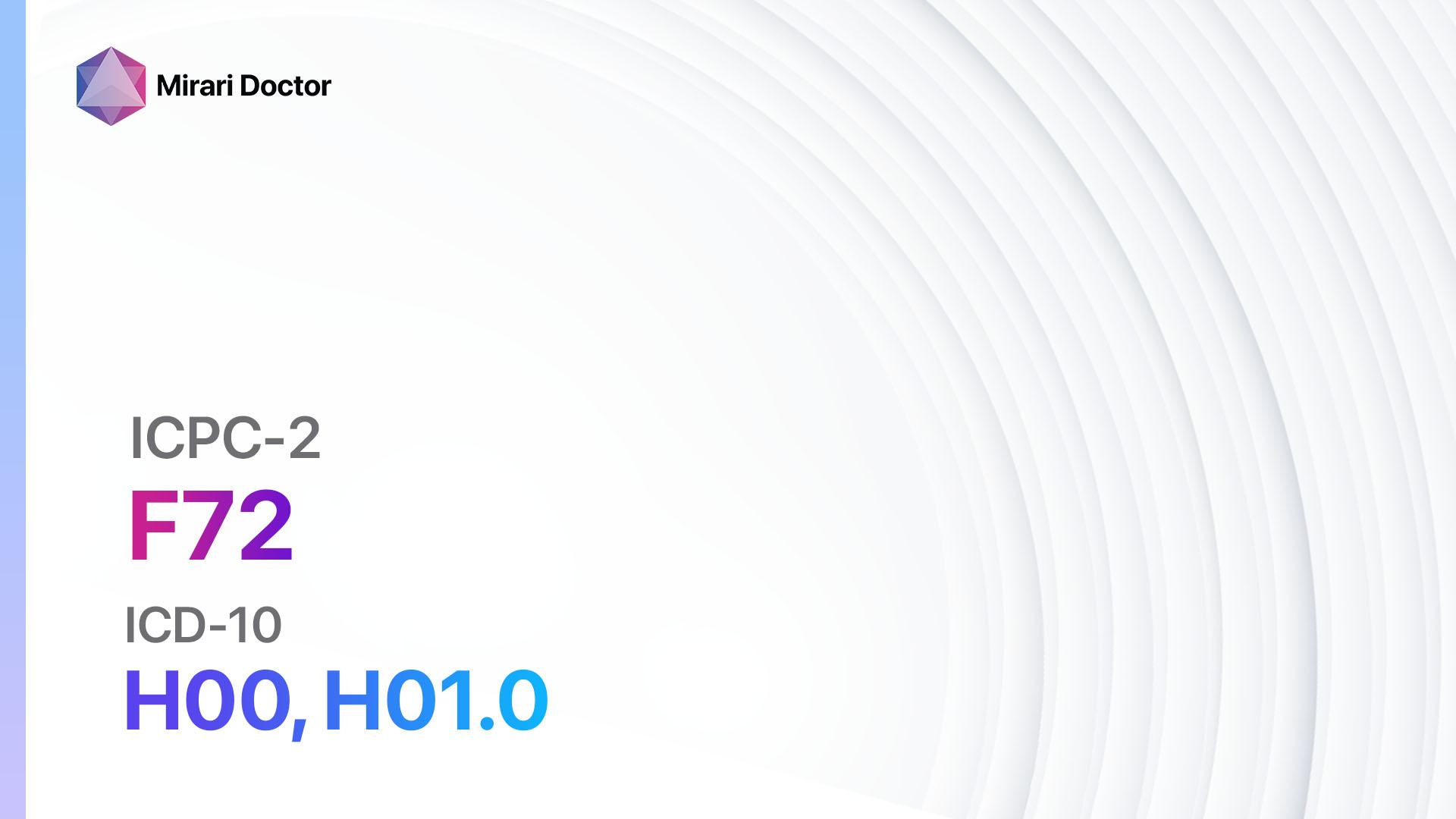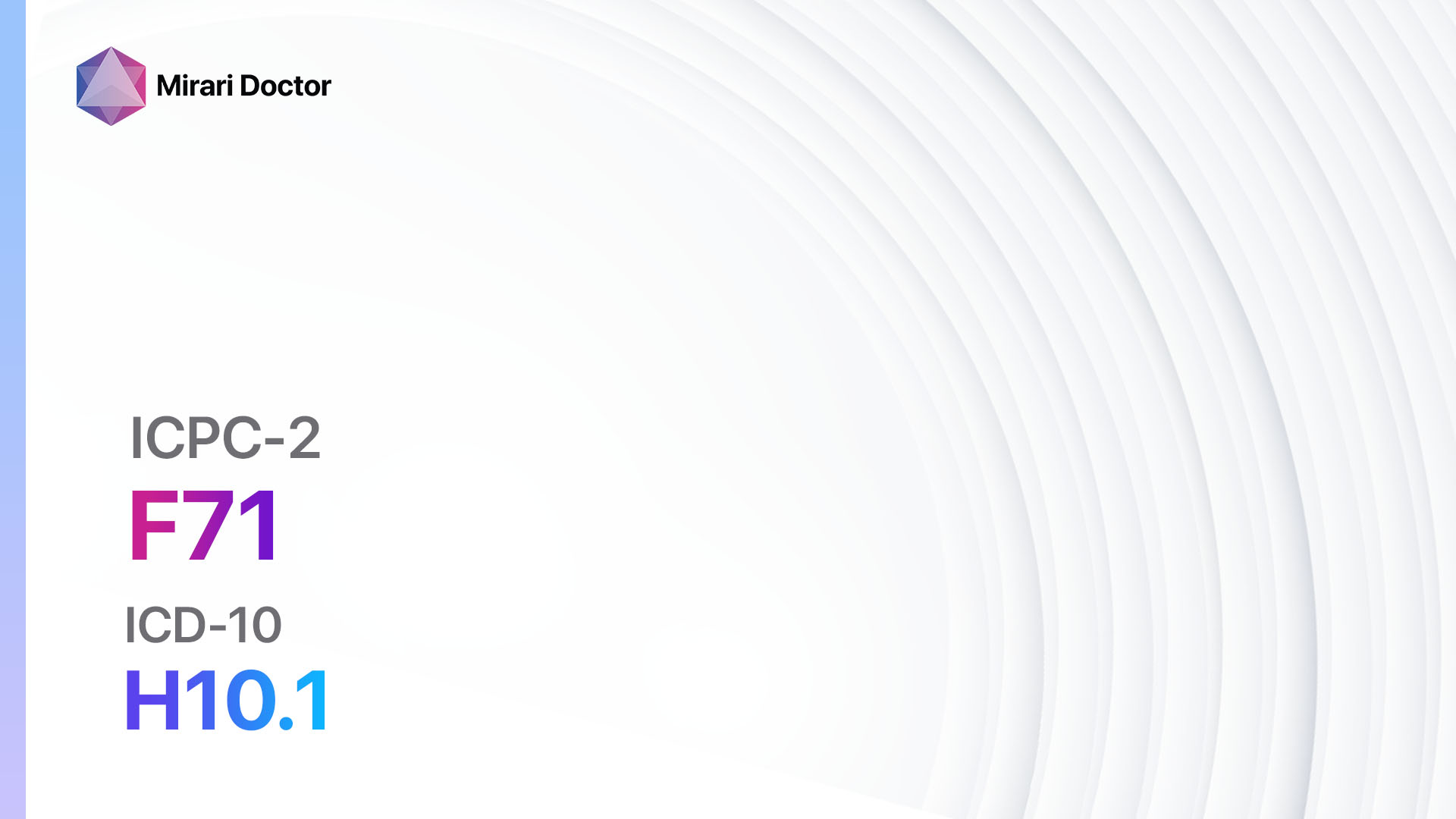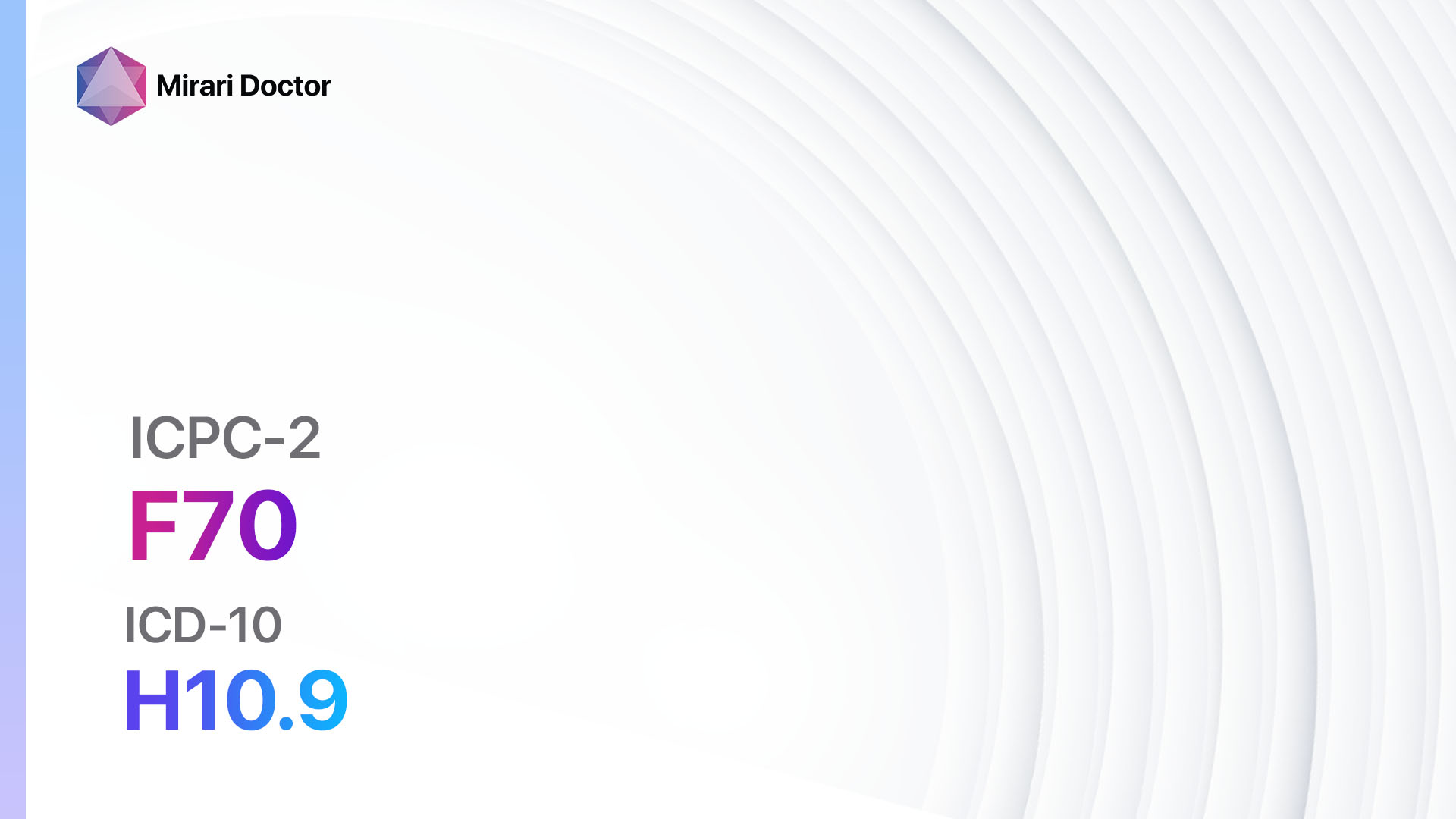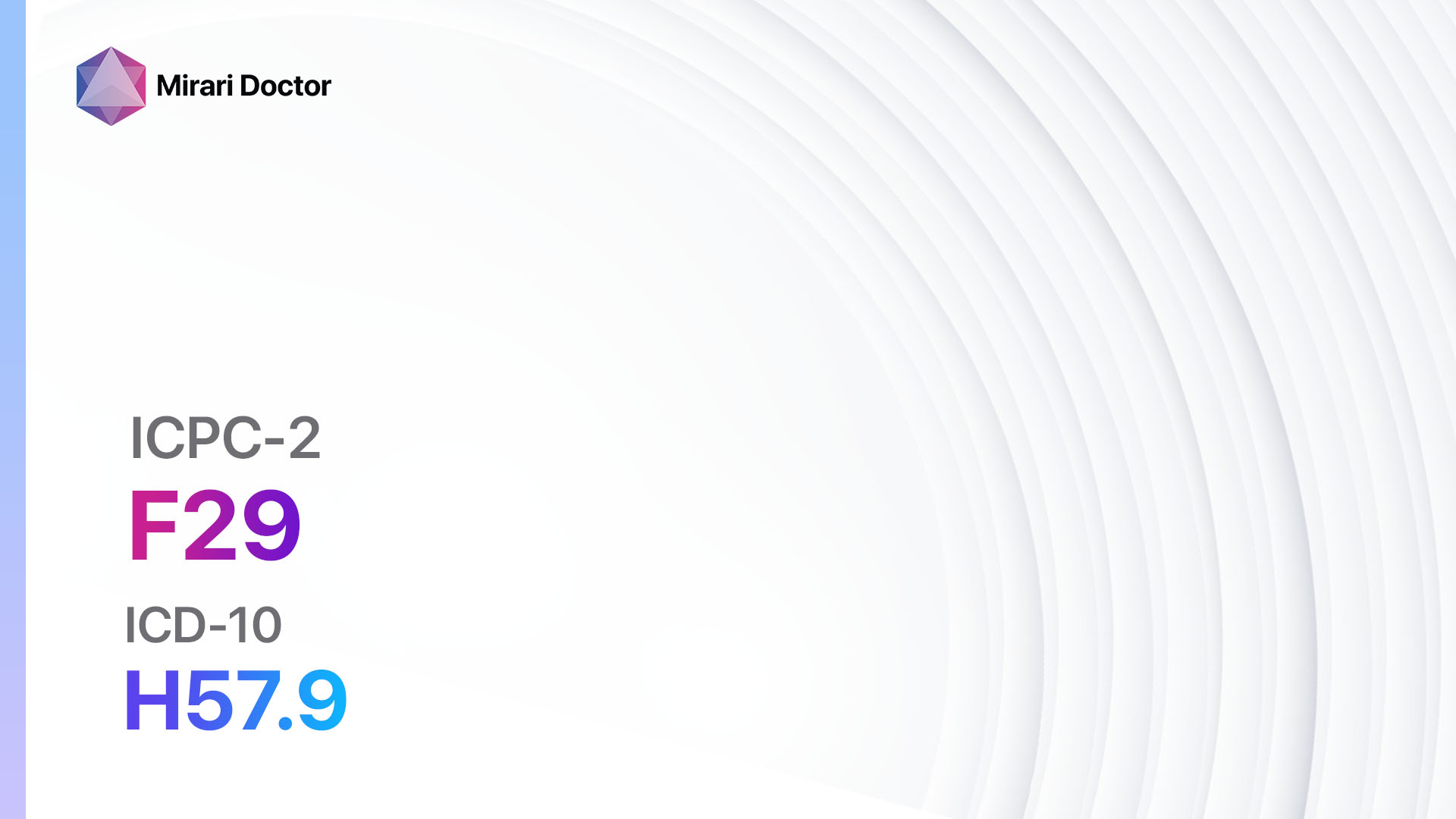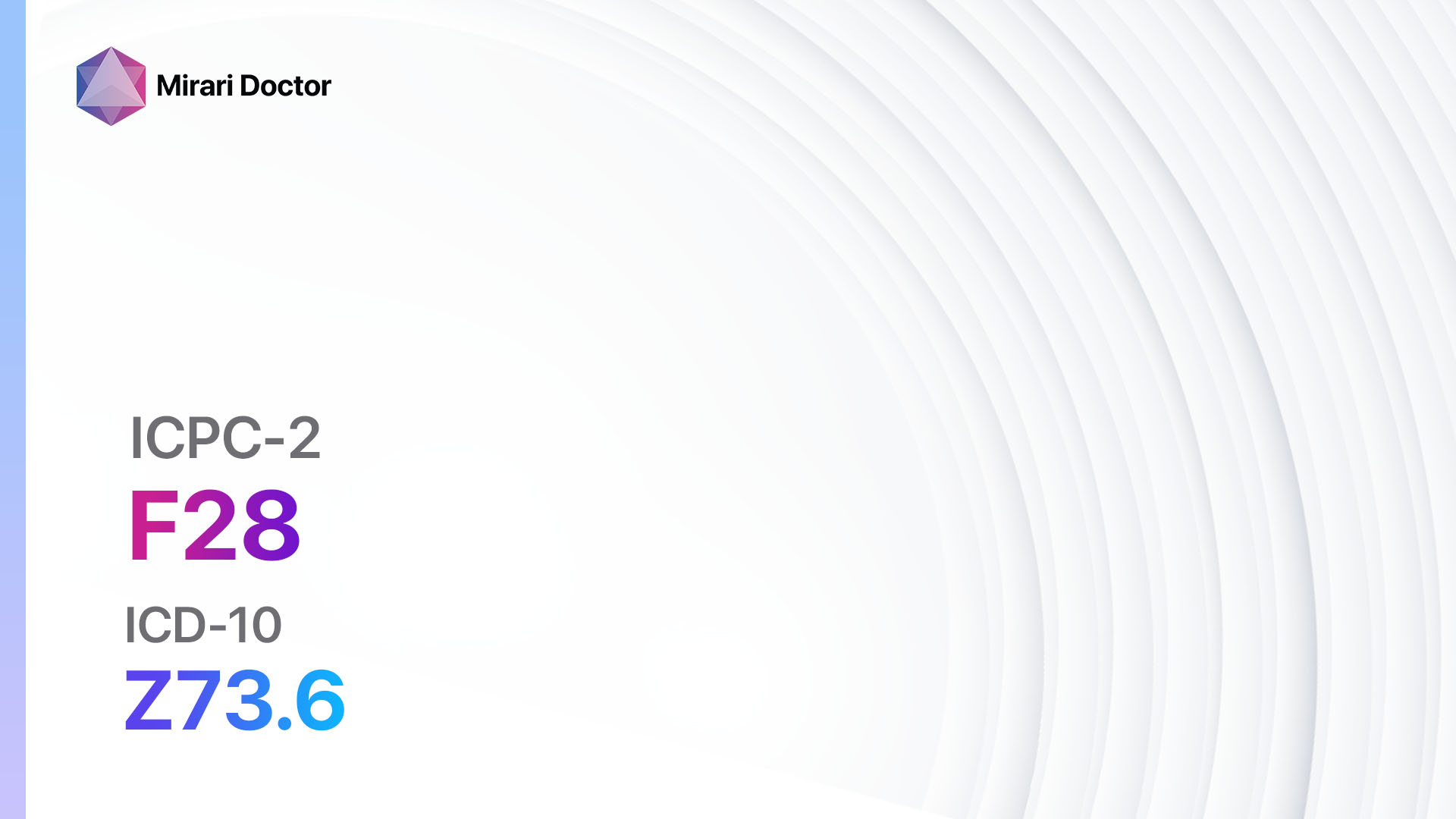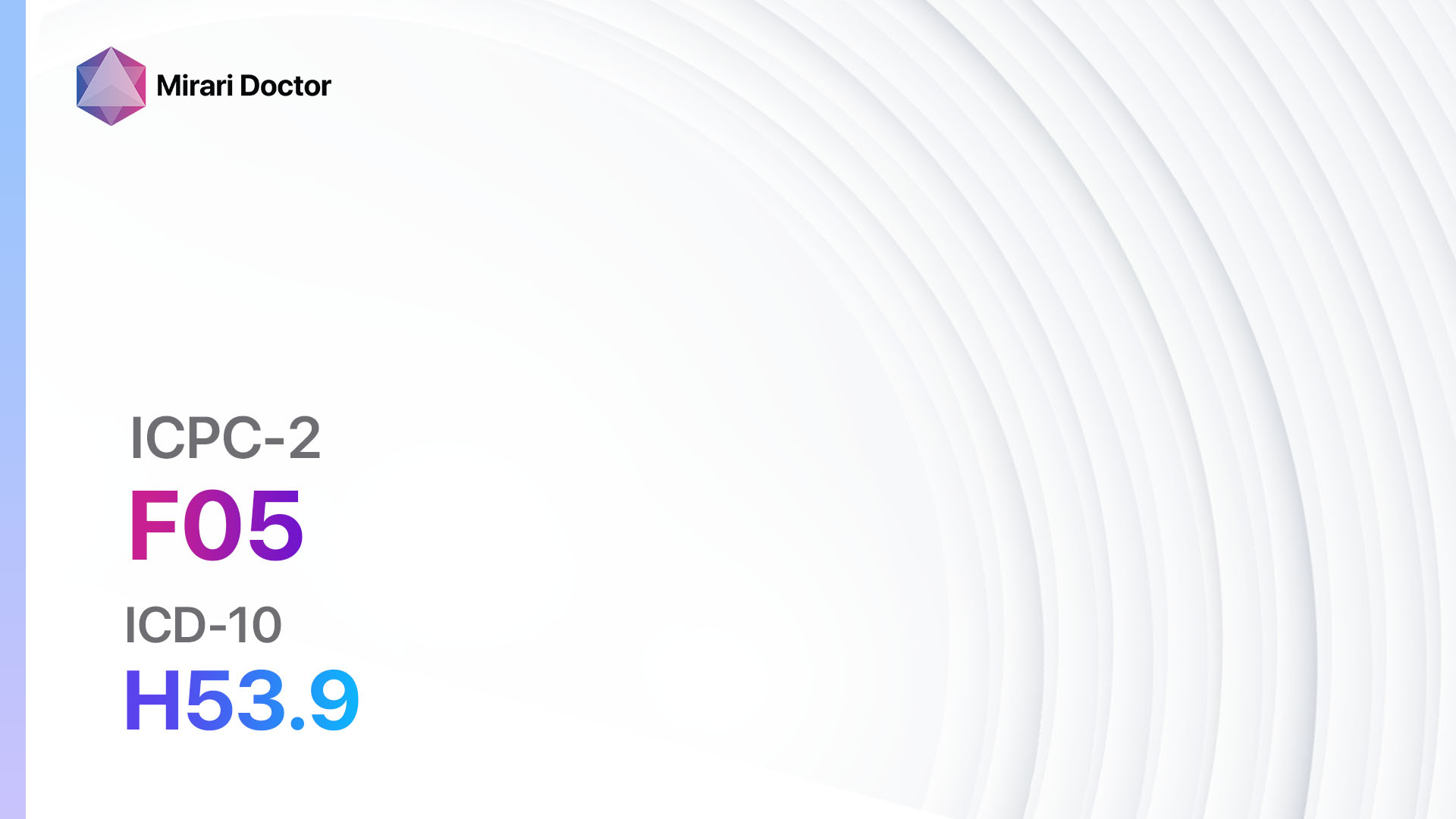
Introduction
Visual disturbance is a broad term that encompasses various conditions affecting the normal functioning of the visual system. It can manifest as blurred vision, double vision, blind spots, or other visual abnormalities[1]. Visual disturbances can be caused by a range of factors, including eye disorders, neurological conditions, and systemic diseases[2]. The aim of this guide is to provide a comprehensive overview of the diagnostic steps and possible interventions for visual disturbance other (ICPC-2: F05).
Codes
- ICPC-2 Code: F05 Visual disturbance other
- ICD-10 Code: H53.9 Visual disturbance, unspecified
Symptoms
- Blurred vision: A decrease in sharpness or clarity of vision[3].
- Double vision: Seeing two images instead of one[4].
- Blind spots: Areas of vision loss or darkness[5].
- Flashes of light: Seeing brief bursts of light without an external source[6].
- Floaters: Small specks or spots that float across the field of vision[7].
- Tunnel vision: Loss of peripheral vision, resulting in a narrowed field of view[8].
Causes
- Eye disorders: Cataracts, glaucoma, macular degeneration, diabetic retinopathy[9].
- Neurological conditions: Migraine, optic neuritis, stroke, brain tumor[10].
- Systemic diseases: Diabetes, hypertension, autoimmune disorders.
Diagnostic Steps
Medical History
- Gather information about the patient’s symptoms, including the duration, frequency, and severity.
- Inquire about any associated symptoms, such as headache, eye pain, or changes in vision.
- Assess the patient’s medical history, including any previous eye disorders, neurological conditions, or systemic diseases.
- Identify any risk factors, such as family history of eye diseases, smoking, or exposure to toxins.
Physical Examination
- Perform a comprehensive eye examination, including visual acuity testing, assessment of pupillary reflexes, and examination of the external and internal structures of the eye.
- Evaluate the patient’s visual fields to identify any areas of vision loss or abnormalities.
- Check for signs of optic nerve damage, such as optic disc swelling or pallor.
- Assess the patient’s general neurological status, including cranial nerve function and coordination.
Laboratory Tests
- Complete blood count (CBC): To assess for anemia or infection.
- Blood glucose levels: To screen for diabetes.
- Lipid profile: To evaluate for dyslipidemia, which can contribute to eye disorders.
- Erythrocyte sedimentation rate (ESR) and C-reactive protein (CRP): To assess for inflammation.
- Thyroid function tests: To rule out thyroid disorders, which can affect vision.
- Autoimmune markers: To screen for autoimmune diseases that may cause visual disturbances.
Diagnostic Imaging
- Optical coherence tomography (OCT): To assess the thickness and integrity of the retinal layers.
- Magnetic resonance imaging (MRI) of the brain and orbits: To evaluate for structural abnormalities or tumors.
- Computed tomography (CT) scan of the head: To assess for intracranial pathology, such as hemorrhage or stroke.
- Fluorescein angiography: To visualize the blood vessels in the retina and identify any abnormalities.
- Visual field testing: To quantify the extent and severity of visual field defects.
Other Tests
- Electroretinography (ERG): To assess the function of the retina and detect any abnormalities in the electrical responses.
- Electrooculography (EOG): To evaluate the function of the retinal pigment epithelium and diagnose certain inherited retinal disorders.
- Lumbar puncture: To analyze the cerebrospinal fluid for signs of infection or inflammation.
- Genetic testing: To identify specific gene mutations associated with inherited eye disorders.
- Electroencephalogram (EEG): To evaluate brain wave patterns and detect any abnormalities.
Follow-up and Patient Education
- Schedule regular follow-up appointments to monitor the progression of the visual disturbance and assess the effectiveness of interventions.
- Educate the patient about the underlying cause of their visual disturbance and provide information about lifestyle modifications and treatment options.
- Encourage the patient to report any changes in symptoms or new visual abnormalities promptly.
- Refer the patient to appropriate specialists, such as ophthalmologists, neurologists, or endocrinologists, for further evaluation and management.
Possible Interventions
Traditional Interventions
Medications:
Top 5 drugs for Visual disturbance other:
- Corticosteroids (e.g., Prednisone, Dexamethasone):
- Cost: Generic versions can range from $5 to $50/month.
- Contraindications: Active infections, uncontrolled diabetes, glaucoma.
- Side effects: Increased appetite, weight gain, mood changes.
- Severe side effects: Osteoporosis, adrenal suppression, increased risk of infections.
- Drug interactions: Nonsteroidal anti-inflammatory drugs (NSAIDs), anticoagulants.
- Warning: Prolonged use may require gradual tapering to avoid adrenal insufficiency.
- Antiepileptic drugs (e.g., Gabapentin, Pregabalin):
- Cost: Generic versions can range from $10 to $100/month.
- Contraindications: Hypersensitivity to the drug, renal impairment.
- Side effects: Dizziness, drowsiness, peripheral edema.
- Severe side effects: Suicidal thoughts, severe skin reactions.
- Drug interactions: Opioids, benzodiazepines.
- Warning: May cause dependence or withdrawal symptoms with abrupt discontinuation.
- Beta-blockers (e.g., Propranolol, Timolol):
- Cost: Generic versions can range from $10 to $30/month.
- Contraindications: Severe bradycardia, heart block, asthma.
- Side effects: Fatigue, cold hands and feet, decreased exercise tolerance.
- Severe side effects: Worsening of heart failure, bronchospasm.
- Drug interactions: Calcium channel blockers, insulin.
- Warning: Should not be abruptly stopped, as it may cause rebound hypertension.
- Acetylcholinesterase inhibitors (e.g., Donepezil, Rivastigmine):
- Cost: Generic versions can range from $10 to $50/month.
- Contraindications: Hypersensitivity to the drug, gastrointestinal obstruction.
- Side effects: Nausea, vomiting, diarrhea.
- Severe side effects: Bradycardia, seizures.
- Drug interactions: Anticholinergic drugs, beta-blockers.
- Warning: May cause gastrointestinal bleeding in patients with peptic ulcer disease.
- Calcium channel blockers (e.g., Verapamil, Diltiazem):
- Cost: Generic versions can range from $10 to $30/month.
- Contraindications: Severe hypotension, heart block, heart failure.
- Side effects: Headache, dizziness, constipation.
- Severe side effects: Worsening of heart failure, bradycardia.
- Drug interactions: Beta-blockers, grapefruit juice.
- Warning: Regular blood pressure monitoring is required.
Alternative Drugs:
- Antidepressants (e.g., Amitriptyline, Venlafaxine): May be used for the management of visual disturbances associated with migraines or other neurological conditions.
- Antipsychotics (e.g., Quetiapine, Risperidone): Can be considered for visual disturbances related to psychiatric disorders or as an adjunctive treatment for certain neurological conditions.
- Antihistamines (e.g., Diphenhydramine, Loratadine): May help alleviate visual disturbances caused by allergies or sinus congestion.
- Vitamin supplements (e.g., Vitamin B12, Vitamin D): Can be beneficial for visual disturbances associated with nutritional deficiencies.
Surgical Procedures:
- Vitrectomy: A surgical procedure to remove the vitreous gel from the eye, which may be necessary in certain cases of severe floaters or vitreous hemorrhage. Cost: $5,000 to $15,000.
- Laser photocoagulation: A procedure that uses a laser to seal leaking blood vessels in the retina, commonly performed in diabetic retinopathy. Cost: $1,000 to $5,000.
- Retinal detachment repair: Various surgical techniques, such as scleral buckle or vitrectomy, may be used to reattach the retina in cases of retinal detachment. Cost: $5,000 to $15,000.
Alternative Interventions
- Acupuncture: May help improve blood flow and reduce pain. Cost: $60-$120 per session.
- Chelation therapy: Controversial treatment involving the administration of chelating agents to remove heavy metals from the body. Cost: $75-$150 per session.
- Hyperbaric oxygen therapy: Involves breathing pure oxygen in a pressurized chamber to increase oxygen delivery to tissues. Cost: $200-$300 per session.
- Herbal supplements: Some herbs, such as bilberry and ginkgo biloba, may have potential benefits for improving vision. Cost: Varies depending on the specific supplement.
- Vision therapy: A customized program of eye exercises and activities to improve visual skills and alleviate visual disturbances. Cost: $50-$200 per session.
Lifestyle Interventions
- Healthy diet: Encourage the patient to consume a balanced diet rich in fruits, vegetables, and omega-3 fatty acids to support overall eye health. Cost: Varies depending on dietary choices.
- Regular exercise: Promote regular physical activity to improve circulation and maintain a healthy weight. Cost: Varies depending on the chosen exercise regimen.
- Smoking cessation: Advise the patient to quit smoking, as it can contribute to the development and progression of eye disorders. Cost: Varies depending on the chosen smoking cessation method.
- Eye protection: Emphasize the importance of wearing sunglasses and protective eyewear to shield the eyes from harmful UV rays and potential injuries. Cost: Varies depending on the chosen eyewear.
- Stress management: Encourage stress-reducing techniques, such as meditation, yoga, or relaxation exercises, as stress can exacerbate visual disturbances. Cost: Varies depending on the chosen stress management method.
It is important to note that the cost ranges provided are approximate and may vary depending on the location and availability of the interventions.
Mirari Cold Plasma Alternative Intervention
Understanding Mirari Cold Plasma
- Safe and Non-Invasive Treatment: Mirari Cold Plasma is a safe and non-invasive treatment option for various skin conditions. It does not require incisions, minimizing the risk of scarring, bleeding, or tissue damage.
- Efficient Extraction of Foreign Bodies: Mirari Cold Plasma facilitates the removal of foreign bodies from the skin by degrading and dissociating organic matter, allowing easier access and extraction.
- Pain Reduction and Comfort: Mirari Cold Plasma has a local analgesic effect, providing pain relief during the treatment, making it more comfortable for the patient.
- Reduced Risk of Infection: Mirari Cold Plasma has antimicrobial properties, effectively killing bacteria and reducing the risk of infection.
- Accelerated Healing and Minimal Scarring: Mirari Cold Plasma stimulates wound healing and tissue regeneration, reducing healing time and minimizing the formation of scars.
Mirari Cold Plasma Prescription
Video instructions for using Mirari Cold Plasma Device – F05 Visual disturbance other (ICD-10:H53.9)
| Mild | Moderate | Severe |
| Mode setting: 1 (Infection) Location: 7 (Neuro system & ENT) Morning: 15 minutes, Evening: 15 minutes |
Mode setting: 1 (Infection) Location: 7 (Neuro system & ENT) Morning: 30 minutes, Lunch: 30 minutes, Evening: 30 minutes |
Mode setting: 1 (Infection) Location: 7 (Neuro system & ENT) Morning: 30 minutes, Lunch: 30 minutes, Evening: 30 minutes |
| Mode setting: 2 (Wound Healing) Location: 7 (Neuro system & ENT) Morning: 15 minutes, Evening: 15 minutes |
Mode setting: 2 (Wound Healing) Location: 7 (Neuro system & ENT) Morning: 30 minutes, Lunch: 30 minutes, Evening: 30 minutes |
Mode setting: 2 (Wound Healing) Location: 7 (Neuro system & ENT) Morning: 30 minutes, Lunch: 30 minutes, Evening: 30 minutes |
| Mode setting: 3 (Antiviral Therapy) Location: 7 (Neuro system & ENT) Morning: 15 minutes, Evening: 15 minutes |
Mode setting: 3 (Antiviral Therapy) Location: 7 (Neuro system & ENT) Morning: 30 minutes, Lunch: 30 minutes, Evening: 30 minutes |
Mode setting: 3 (Antiviral Therapy) Location: 7 (Neuro system & ENT) Morning: 30 minutes, Lunch: 30 minutes, Evening: 30 minutes |
| Total Morning: 45 minutes approx. $7.50 USD, Evening: 45 minutes approx. $7.50 USD |
Total Morning: 90 minutes approx. $15 USD, Lunch: 90 minutes approx. $15 USD, Evening: 90 minutes approx. $15 USD, |
Total Morning: 90 minutes approx. $15 USD, Lunch: 90 minutes approx. $15 USD, Evening: 90 minutes approx. $15 USD, |
| Usual treatment for 7-60 days approx. $105 USD – $900 USD | Usual treatment for 6-8 weeks approx. $1,890 USD – $2,520 USD |
Usual treatment for 3-6 months approx. $4,050 USD – $8,100 USD
|
 |
|
Use the Mirari Cold Plasma device to treat Visual disturbance other effectively.
WARNING: MIRARI COLD PLASMA IS DESIGNED FOR THE HUMAN BODY WITHOUT ANY ARTIFICIAL OR THIRD PARTY PRODUCTS. USE OF OTHER PRODUCTS IN COMBINATION WITH MIRARI COLD PLASMA MAY CAUSE UNPREDICTABLE EFFECTS, HARM OR INJURY. PLEASE CONSULT A MEDICAL PROFESSIONAL BEFORE COMBINING ANY OTHER PRODUCTS WITH USE OF MIRARI.
Step 1: Cleanse the Skin
- Start by cleaning the affected area of the skin with a gentle cleanser or mild soap and water. Gently pat the area dry with a clean towel.
Step 2: Prepare the Mirari Cold Plasma device
- Ensure that the Mirari Cold Plasma device is fully charged or has fresh batteries as per the manufacturer’s instructions. Make sure the device is clean and in good working condition.
- Switch on the Mirari device using the power button or by following the specific instructions provided with the device.
- Some Mirari devices may have adjustable settings for intensity or treatment duration. Follow the manufacturer’s instructions to select the appropriate settings based on your needs and the recommended guidelines.
Step 3: Apply the Device
- Place the Mirari device in direct contact with the affected area of the skin. Gently glide or hold the device over the skin surface, ensuring even coverage of the area experiencing.
- Slowly move the Mirari device in a circular motion or follow a specific pattern as indicated in the user manual. This helps ensure thorough treatment coverage.
Step 4: Monitor and Assess:
- Keep track of your progress and evaluate the effectiveness of the Mirari device in managing your Visual disturbance other. If you have any concerns or notice any adverse reactions, consult with your health care professional.
Note
This guide is for informational purposes only and should not replace the advice of a medical professional. Always consult with your healthcare provider or a qualified medical professional for personal advice, diagnosis, or treatment. Do not solely rely on the information presented here for decisions about your health. Use of this information is at your own risk. The authors of this guide, nor any associated entities or platforms, are not responsible for any potential adverse effects or outcomes based on the content.
Mirari Cold Plasma System Disclaimer
- Purpose: The Mirari Cold Plasma System is a Class 2 medical device designed for use by trained healthcare professionals. It is registered for use in Thailand and Vietnam. It is not intended for use outside of these locations.
- Informational Use: The content and information provided with the device are for educational and informational purposes only. They are not a substitute for professional medical advice or care.
- Variable Outcomes: While the device is approved for specific uses, individual outcomes can differ. We do not assert or guarantee specific medical outcomes.
- Consultation: Prior to utilizing the device or making decisions based on its content, it is essential to consult with a Certified Mirari Tele-Therapist and your medical healthcare provider regarding specific protocols.
- Liability: By using this device, users are acknowledging and accepting all potential risks. Neither the manufacturer nor the distributor will be held accountable for any adverse reactions, injuries, or damages stemming from its use.
- Geographical Availability: This device has received approval for designated purposes by the Thai and Vietnam FDA. As of now, outside of Thailand and Vietnam, the Mirari Cold Plasma System is not available for purchase or use.
References
- Optometrists.org. (n.d.). Top 9 Causes of Visual Distortions. Retrieved from https://www.optometrists.org/general-practice-optometry/guide-to-eye-conditions/guide-to-blurry-vision-and-headaches/top-9-causes-of-visual-distortions/
- Demmin, D. L., & Silverstein, S. M. (2020). Visual Impairment and Mental Health: Unmet Needs and Treatment Options. Clinical Ophthalmology (Auckland, N.Z.), 14, 4229–4251. https://doi.org/10.2147/OPTH.S258783
- Healthline. (2018, August 28). Visual Disturbances: Definition and Patient Education. Retrieved from https://www.healthline.com/health/visual-disturbances
- Shekar Eye Hospital. (2020, July 22). Causes, Symptoms of Visual Disturbances [Video]. YouTube. https://www.youtube.com/watch?v=Rlf3jjCv3T4
- Newman, N. J. (2009). Diagnostic Approach to Vision Loss. CONTINUUM: Lifelong Learning in Neurology, 15(4), 26–43. https://doi.org/10.1212/01.CON.0000348819.86313.f2
- Biousse, V., & Newman, N. J. (2009). Sudden loss of vision – history and examination. Australian Family Physician, 38(10), 766–769.
- Face Restoration. (n.d.). Visual Disturbance & Eye Problems. Retrieved from https://www.facerestoration.com/conditions/visual-disturbance-eye-problems/
- yrrells and Embery. (2019, March 6). Why do I get Visual Disturbances? Retrieved from https://www.tyrrellsandembery.co.uk/single-post/why-do-i-get-visual-disturbances
- WebMD. (n.d.). Understanding Vision Problems — Treatment. Retrieved from https://www.webmd.com/eye-health/understanding-vision-problems-treatment
- MS Australia. (n.d.). Visual Disturbances. Retrieved from https://www.msaustralia.org.au/symptom/visual-disturbances/
Related articles
Made in USA


